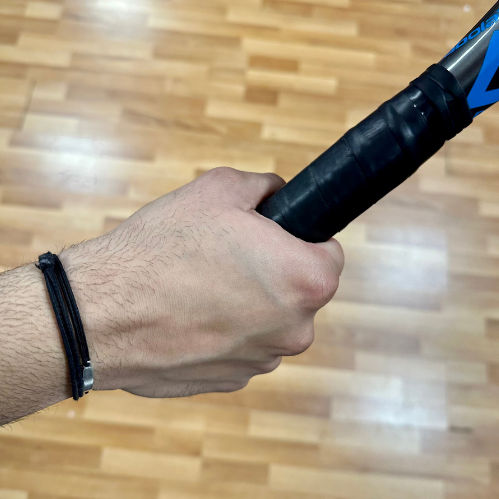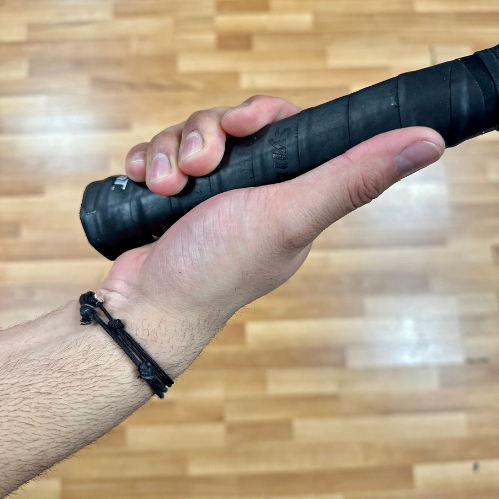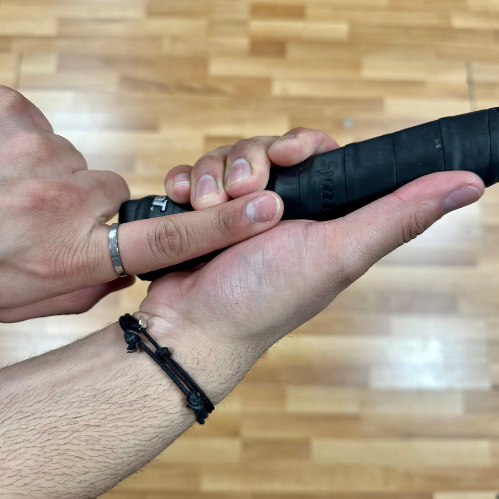How To Choose A Tennis Racket and Grip Size
Find the perfect tennis racket for your needs with Tennisnuts as your guide. Whether you are a beginner or looking for a racket with power, spin, or control, discover how to choose the best tennis racket for you.
As a renowned and experienced tennis specialist, Tennisnuts recognises the diverse needs of tennis players worldwide. Our mission is to cater to each player's unique requirements by offering a range of valuable information in order to help you choose the most suitable racket for you!
4 Things To Consider When Buying A Tennis Racket
Weight
If you are new to tennis, a heavy racket weighs over 300g and offers great stability. It is typically preferred by advanced players and helps them control powerful shots.
On the other hand, lightweight rackets below 280g are easier to move and are beneficial for serving and switching between forehand and backhand. They provide power effortlessly for players with shorter swings or less strength.
Headsize
Advanced players who can consistently hit the sweet spot and generate power prefer smaller head sized, typically below 100 sq inches, for precise shot placement.
Larger head sizes about 102 sq inches are beneficial for players who haven't mastered a strong swing yet, they provide a larger sweet spot and forgiveness on off-centre shots, resulting in more consistent, powerful hits.
Balance
The balance of a tennis racket refers to where its weight is distributed, either towards the head or the handle. A higher balance point means the racket is heavier towards the head. Rackets that are more head-light provide better manoeuvrability and control, but may lack power.
Beginners seeking power should go for balances of 340mm or above. Advanced players typically choose balances of 315mm or less. Head-heavy rackets generate more power but may be less accurate. For most competitive players, rackets between 315 and 340mm are suitable, with a preference for more power or control determining the balance point.
Strung or Unstrung
Some rackets come 'factory strung' from the manufacturers, while others are sold as 'Frame Only'. Advanced player rackets are usually sold as 'Frame Only' based on the assumption that an advanced player will have specific stringing requirements, including the type of string and tension.
Factory strung rackets usually assume that players will want to 'pick up and play' with the rackets straight away and will not have specific requirements. As a result, they are usually strung in 'all-round' polyester strings at mid-tension. We recommend sticking with these as a starting point if you are unsure what string or tension you want instead.
If you are considering a 'Frame Only' racket, we have a separate guide on How to Choose Tennis Strings that you may find useful.
4 Steps In Choosing Your Grip Size
If you already own a racket, check your current grip size on the handle
| European Grip size | US Grip size in inches |
|---|---|
| 0 (L0 or G0) | 4 inches |
| 1 (L1 or G1) | 4 1/8 inches |
| 2 (L2 or G2) | 4 1/4 inches |
| 3 (L3 or G3) | 4 3/8 inches |
| 4 (L4 or G4) | 4 1/2 inches |
| 5 (L5 or G5) | 4 5/8 inches |
On the bottom of your tennis racket handle, sometimes there is a number from 0 to 5. This tells you about the grip size. Some countries measure it in inches, while other countries are numbered. Don't worry if your butt cap says "3" instead of " 4 3/8", they actually represent the same grip size!
Hold the racket handle using the continental grip (handshake grip)

Hold your racket sideways and grip the handle so that your pointer finger knuckle is in line with the top-right edge. It should feel similar to giving a handshake to your racket.
Check if your fingers are touching your hand with the continental grip

The most important thing to consider when it comes to choosing your grip size is that you should have a handle that allows a little bit of space between your fingers and your hand. If your fingers completely wrap around the handle and touch your hand, that means you need a larger grip size.
The gap between your fingers and palm should be a fingers width

If the racket is of the correct grip size, the distance between your palm and longest finger should approvimately be the width of a finger (as pictured above). If the gap is too small, it means you will need a larger grip size, and likewise if the gap is too big you will need a smaller grip size.
*If you don't have a racket to hand, you can measure your hand with a ruler. Line it up from the intersection of your thumb and fingers to the top of your ring finger. Note that choosing a grip size is not precise. If between sizes, choose smaller for top spin and larger for a more comfortable hitting experience.




















